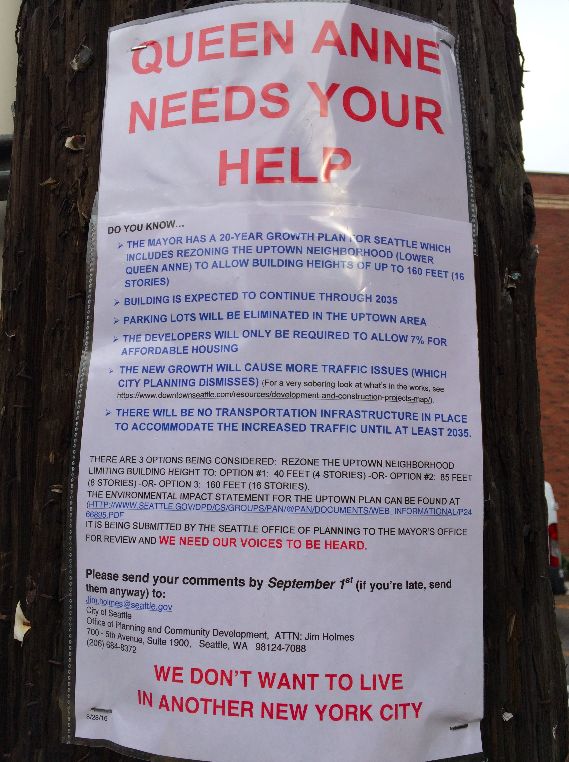Queen Anne Emerges as Bulwark Against City's Development Goals

Queen Anne has become the hotbed against HALA.
This Wednesday the city’s hearing examiner will hear an appeal by the Queen Anne Community Council against city hall legislation, sponsored by council member Mike O’Brien, that’s part of the city’s HALA agenda to add more housing stock to the city.
The legislation, which the Queen Anne Community Council complains would rezone single-family zones to triplex zones, would allow homeowners to add an apartment inside their homes plus add an extra unit on the property, like a garage apartment—known as an accessory dwelling unit (ADU) or a detached accessory dwelling unit (DADU.) The zoning changes wouldn’t require any new parking.
Specifically, the group’s legal complaint to the hearing examiner challenges the city ruling that the legislation, which would also raise heights and lower lot size restrictions for building the accessory dwelling units, doesn’t trigger a full blown environmental impact statement; the city’s planning department pissed off the QA council by making a “Determination of Non-significance” (DNS), which means the city doesn’t have to go through a broader Environmental Impact Statement (EIS) process in addition to the city’s own review.
The Queen Anne Community Council has raised $25,000 for their legal appeal.
In an email to supporters yesterday, Queen Anne Community Council leader Marty Kaplan wrote:
Our appeal directly challenges the intentional failure of O'Brien's legislation and in turn City Hall to address and actually professionally study, critically analyze, and transparently report to the public the true environment impacts of this ill-advised legislation. We propose instead that a full and comprehensive environmental impact study (EIS) must be completed.
Meanwhile, these signs went up in Queen Anne recently.

The signs denounce Mayor Ed Murray’s overall HALA plan, which would nudge development into the edges of single family zones near commercial zones and transit corridors, loosening zoning restrictions to allow for more height and density.
One of the complaints on the poster—that developers would “only” be required to set aside seven percent of new developments for affordable housing—raises two questions for the Queen Anne dissidents, though. 1) Do they realize that mandatory affordable housing requirements for development are an unprecedented populist policy in Seattle?
And 2) Are they actually asking for a higher affordable housing mandate? If so, they should realize that the council recently amended the HALA legislation to ensure that if developers choose to pay into a housing fund (which most are likely to do), rather than building on site, the legislative priority is for “locating near developments that generate cash contributions.” In other words, raising the requirement means more low-income families will live in Queen Anne.
I’m not saying that’s not good policy; in fact, it's good public policy. But it could change the demographic of the neighborhood and make it harder for the Queen Anne Community Council to raise $25,000 the next time they don’t want more people—presumably those who rely on the D Line or the 1— living in their single family zone.




